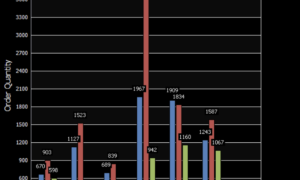As machine learning continues to revolutionize various industries, traditional neural networks face limitations when dealing with structured and interconnected data. Enter Graph Neural Networks (GNNs), a breakthrough innovation in handling complex data. By leveraging graph structures, GNNs offer a powerful alternative to conventional neural networks, transforming fields such as bioinformatics, social network analysis, and more. Rathish Mohan, a prominent researcher in AI and machine learning, has extensively explored the potential of GNNs in advancing complex data analysis across numerous sectors.
Breaking the Barriers of Traditional Neural Networks
Traditional neural networks like Convolutional Neural Networks (CNNs) and Recurrent Neural Networks (RNNs) excel in processing grid-like and sequential data, respectively. However, when data is inherently irregular or represented as graphs, these networks fall short. GNNs address this gap by working directly on graph structures, allowing for more effective modeling of relationships within complex networks. Whether it’s a social network, molecular structure, or traffic system, GNNs capture the intricate dependencies and patterns that traditional models often miss.
Tackling Irregular Data Structures
GNNs excel in handling irregular data structures, unlike CNNs limited to grid-like inputs. They can process diverse graph structures, representing real-world systems like social networks and molecular bonds. Their adaptability to varying graph sizes makes them ideal for analyzing dynamic systems, such as evolving networks or protein interactions.
Efficiency Through Parameter Sharing
Another key strength of GNNs lies in their efficient use of parameters. By applying the same transformation across all nodes in a graph, GNNs significantly reduce the number of parameters compared to fully connected networks. This technique, known as parameter sharing, enhances both computational efficiency and scalability, especially when working with large-scale graphs.
Fewer parameters mean less memory and computational power required for training and inference, making GNNs ideal for applications with large datasets, such as social media analysis or molecular interactions. Furthermore, parameter sharing allows GNNs to generalize patterns across different sections of a graph, improving their ability to recognize relationships in unseen data.
Diverse Applications of GNNs
The versatility of GNNs has opened doors to applications across various fields. In tasks such as node classification, link prediction, and graph classification, GNNs have achieved state-of-the-art results. For example, they have been instrumental in identifying proteins’ roles in biological networks and predicting drug-target interactions, significantly advancing bioinformatics and pharmaceutical research.
GNNs have also made strides in recommender systems, where they model user-item interactions as graphs to generate more personalized and accurate recommendations. In traffic prediction, GNNs analyze road networks as graphs, capturing spatial-temporal dependencies to predict traffic patterns more accurately.
Addressing Current Challenges in GNNs
Despite their immense potential, GNNs face several challenges that require ongoing research. Scalability is one of the primary obstacles, as real-world networks, such as social media platforms, can involve billions of nodes and edges. Current GNN architectures struggle with processing such large graphs efficiently. To overcome this, researchers are developing sampling techniques and distributed computing approaches to enhance GNN scalability.
Another challenge lies in capturing global graph properties. While GNNs excel at modeling local structures, they often miss broader patterns and relationships that span the entire graph. Researchers are working on new architectures that better integrate global dependencies, thus improving the overall performance of GNNs on tasks requiring a holistic view of the data.
Paving the Way for Future Innovations
The future of GNNs is ripe with opportunities for further development and innovation. Research is currently focused on several promising directions, including the creation of more interpretable models. As GNNs are increasingly used in sensitive fields like healthcare and finance, understanding the rationale behind their predictions becomes critical. Visualization tools and explainable AI methods are being developed to provide insights into how GNNs make decisions.
In addition, researchers are exploring how GNNs can handle dynamic and temporal graphs, as many real-world systems change over time. Heterogeneous graphs, which contain multiple types of nodes and edges, also present a unique challenge that could unlock even more applications in fields like communication networks and knowledge graphs.
In conclusion, Rathish Mohan highlights that Graph Neural Networks are revolutionizing how we analyze complex data. Their ability to handle irregular structures and efficiently share parameters makes them ideal for a broad range of applications, from drug discovery to social network analysis. While challenges remain, such as scalability and interpretability, ongoing research continues to push the boundaries of GNN technology. As these networks evolve, their impact on industries dealing with complex, interconnected data will only grow, offering new solutions to previously intractable problems.



































